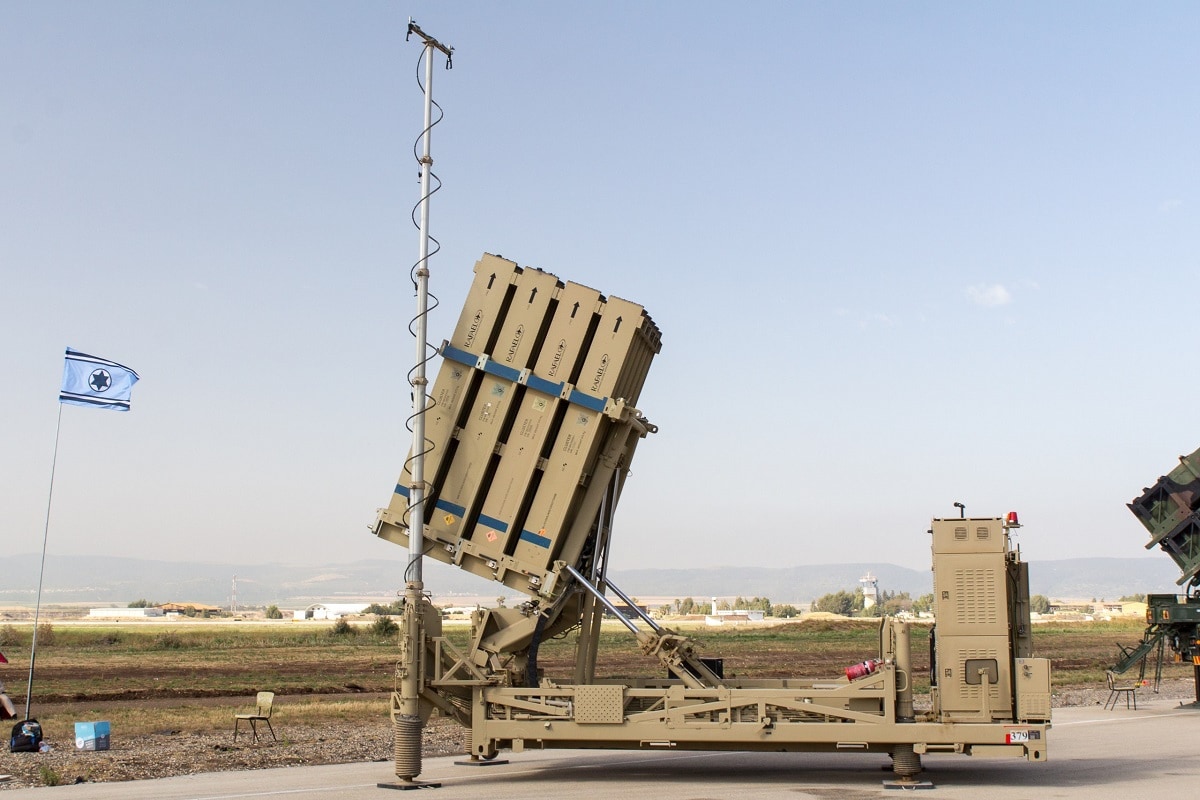Perhaps Israel’s most recognizable defense system is the Iron Dome. Considered one of the most formidable air defense apparatuses in use, the Dome plays a major role in ensuring the survival of the Jewish state.
Since Israel is surrounded by hostile neighbors, the protection of the country’s airspace is of critical importance. Iran-linked proxy groups on Israel’s northern and southern borders launch frequent drone and rocket barrages targeting civilian population centers in the country. The Iron Dome is a critical tool in combating these incessant attacks, and it has saved many lives since it entered service.
Introducing the Iron Dome
With a success rate of over 90%, Israel’s Iron Dome is a top-tier defender.
In the early 2000s, Hezbollah launched thousands of rockets toward Israel from Lebanon, killing dozens of Israelis and resulting in mass evacuations from the north. Understanding that absorbing this type of violence would not be sustainable, the Israeli government wanted a system that could thwart such bombardments. The Israel Defense Forces first proposed a domestic, short-range anti-missile system, but U.S. defense officials cautioned that it would not meet Israel’s needs.
By 2011, the Iron Dome was deployed. In that same year, the air defense system intercepted a Gaza-launched rocket for the first time.
Originally produced in Israel, the Iron Dome was designed by the state-owned Rafael Advanced Defense Systems with U.S. backing. The U.S. continues to provide funding for the Iron Dome today. The air defense system is designed to intercept and take out short-range projectiles from a range of 2.5 to 90 miles. Over the years, the Iron Dome has acquired new capabilities. It can now destroy cruise missiles, unmanned aerial vehicles, and mortar shells.
Equipped with a radar that locates incoming rockets, the Iron Dome then uses a command-and-control system that can ascertain quickly whether a projectile poses an immediate threat to civilians.
As detailed by the Center for Strategic and International Studies, the Iron Dome battery comprises three to four launchers, a battle management system, and a fire control radar.
“Each launcher can hold up to 20 Tamir interceptors. As of 2012/2013, a complete battery costs approximately $100M to produce.1 Each Iron Dome battery can defend an area of up to 150 square kilometers against short-range missiles, mortars, and rockets. To conserve interceptors, the Iron Dome system can discern between rockets that threaten population areas and those that will fall harmlessly in open terrain.”
During the May 2021 Hamas-Israel flare-up, Iron Dome intercepted over 90% of the 4,000 rockets launched toward civilian centers in the Jewish state.
Even the Iron Dome Has Limitations
While the Iron Dome has saved countless lives, the system is not flawless. Specifically,it is vulnerable to swarm tactics. When scores of rockets are launched at one time, they can overwhelm the system. That transpired on Oct. 7, when Hamas carried out its brutal surprise attack.
According to reports, Hamas launched 5,000 rockets from the Gaza Strip within a span of 20 minutes. Due to this high number of projectiles, the Iron Dome could not engage every single one launched and was unable to strike down all its targets.
In the two weeks following the attack, Hamas launched more than 2,000 additional projectiles toward Israel.
In addition to being vulnerable to swarm tactics, the Iron Dome is also extremely pricey to operate. According to the Institute for National Security Studies, each missile costs between $40,000-50,000 dollars.
Despite these high costs and limitations, the Iron Dome is essential to preserving Israel’s security.
Maya Carlin, a Senior Editor for 19FortyFive, is an analyst with the Center for Security Policy and a former Anna Sobol Levy Fellow at IDC Herzliya in Israel. She has by-lines in many publications, including The National Interest, Jerusalem Post, and Times of Israel. You can follow her on Twitter: @MayaCarlin.

